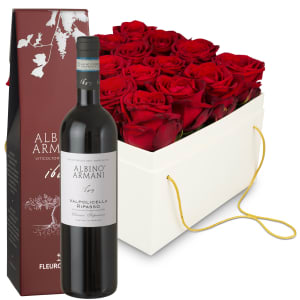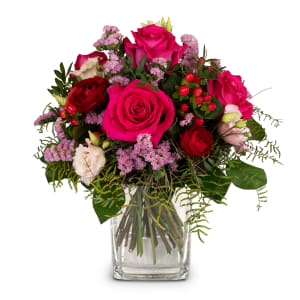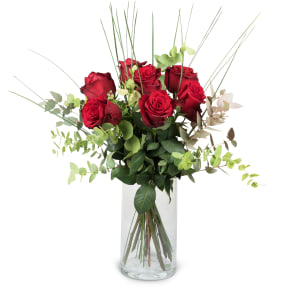People attempted to capture the perfume of roses very early on. The Babylonians,
for example, dipped rose petals in fat to preserve them in around 1500 BC.
The distillation of rose oil, in contrast, came from Persia and was also a familiar technique later in Ancient Rome.
Since the perfume of roses is a stimulant and “bewitches the senses”,
it was hardly surprising that courtesans also discovered it.
Roses for fragrances and cosmetics
Roses have stimulated creativity in many areas, also in the beauty world.
Here you will find exciting things about rosewater, rose oil, rose perfume and smelling bottles.

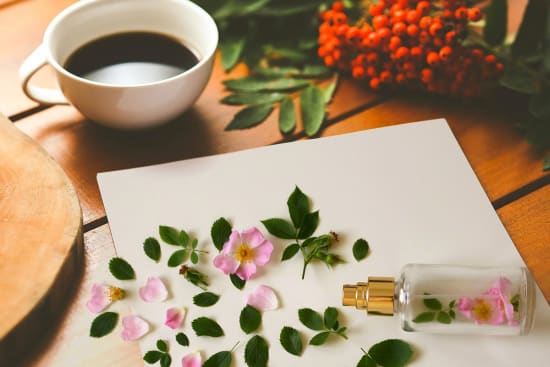
In those circles, the excessive use of rose perfume was almost proverbial. Even in the 17th century,
bordellos in Germany were still called “rose houses” for that reason and ladies who sold their affections
were “ladies from Rose Lane”. In the 18th century, the rose reached the peak of its popularity and featured in
a huge variety of formulas for fragrances. In those days, rose water not only flowed from “perfume fountains”
where people could refill their bottles and was sprayed to give rooms a pleasant scent:
smelling bottles also came into fashion, with essences consisting of nine parts vinegar and one part rose oil. Today, it is impossible to imagine fragrances and cosmetics without the scent of roses.
smelling bottles also came into fashion, with essences consisting of nine parts vinegar and one part rose oil. Today, it is impossible to imagine fragrances and cosmetics without the scent of roses.
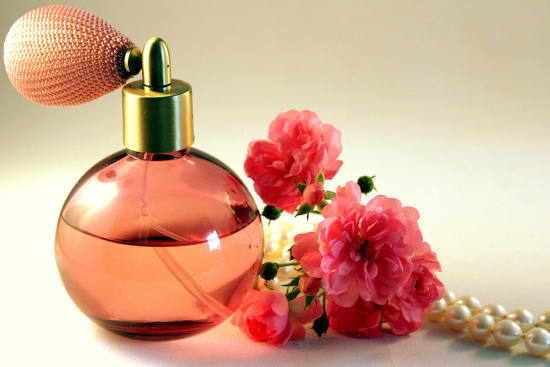
Talking of perfume: the word is derived from “per fumum” (through smoke) and goes back to the
fact that aromatic substances were disseminated by fumigators from early times.
All about the queen of flowers
About rose gifts
Roses are classic gifts of love. But why is there the custom of always giving an odd number of roses? And at what point is a rose long-stemmed?
Why roses don’t have thorns?
«No rose without a thorn», they say. Well, that's just plain wrong. Because roses have no thorns. Learn more about a big misunderstanding here.
Wild roses have been around for 25 million years
Unbelievable, but true: even before there were humans, the first wild roses were blooming. They were simple, had five petals and still exist today.
Roses first cultivated in China
Chinese, Sumerians, Japanese or Persians: all wanted the rose. The rose culture of the Chinese even belonged for a long time to the most advanced in the world.
Europeans discover rose cultivation
For a long time, roses in Europe only bloomed once. This only changed with the discovery trips of the English and Dutch to Asia in the 16th century.
Roses for fragrances and cosmetics
Roses have stimulated creativity in many areas, also in the beauty world. Here you will find exciting things about rosewater, rose oil, rose perfume and smelling bottles.
Roses and their healing properties
The rose has always been used as a medicinal plant. Not only in ancient China, but also in Persia, Greece and Rome. This has remained so until today.
12 June: World Red Rose Day
Roses seduce - and red roses even more so. No wonder, a day is dedicated to them worldwide. They symbolize love and passion and play the leading role on 12 June.
Roses with the Max Havelaar Fairtrade label
Learn more about the Max Havelaar Fairtrade label and Fleurop's collaboration.

